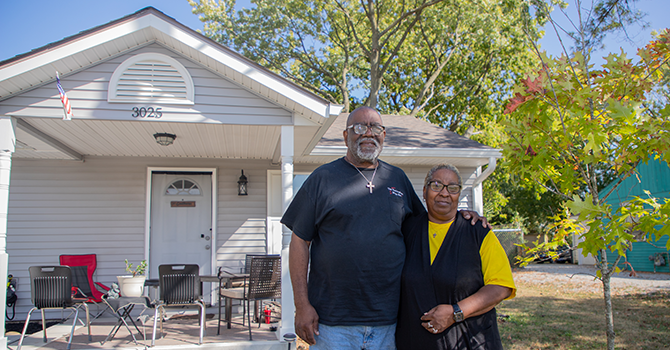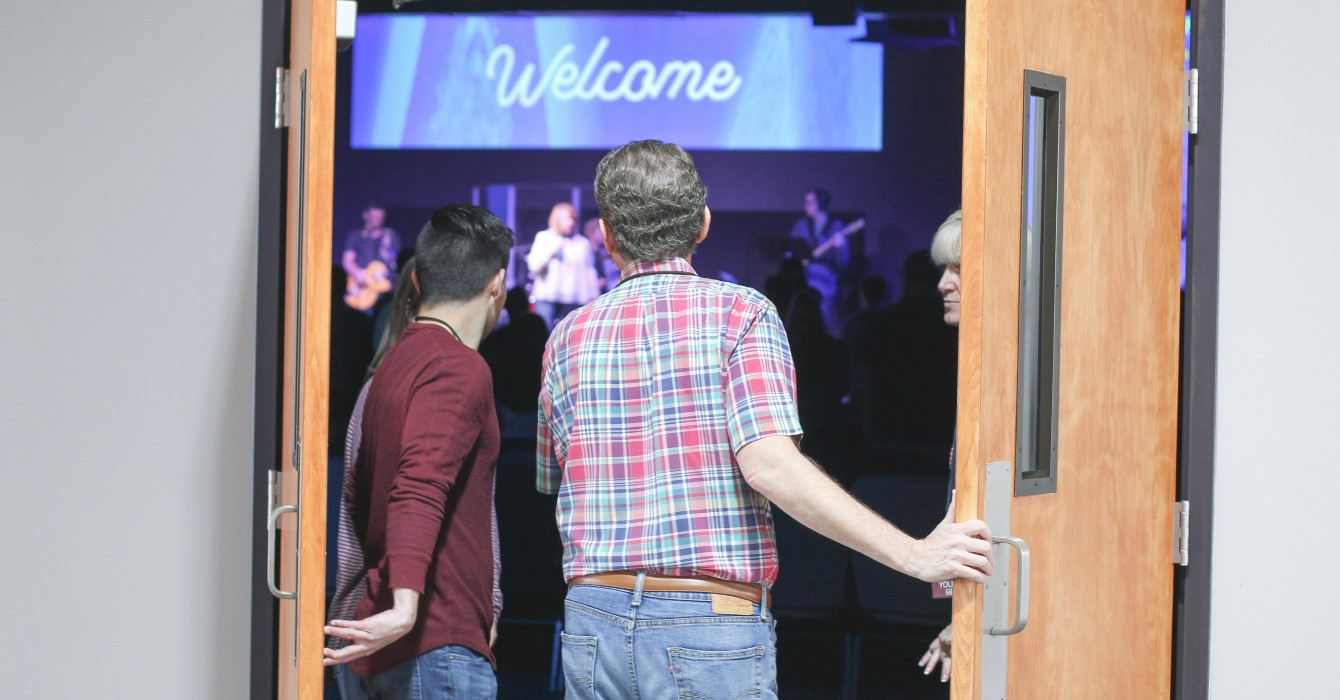Affordable housing is both urgently needed and notoriously difficult to build on Massachusetts’ North Shore, where close to 700,000 people live between Boston and the New Hampshire border.

But the number of affordable units has been growing, due in part to the evolving mission of Harborlight Homes, a nonprofit developer with roots in a Baptist congregation that got its start by launching a home for seniors more than 60 years ago.
Today, at least 57% of North Shore renters are cost-burdened, meaning they spend 30% or more of their income on housing, according to a U.S. Census survey from 2023. That’s higher than the average statewide cost burdens in all 50 states, according to figures in a 2024 Harvard University report.
Efforts to expand the North Shore’s affordable housing stock are chronically hampered not only by high costs for land and building but also by stiff local zoning restrictions.
“The regulatory environment for decades has been the biggest problem, meaning zoning,” said Andrew McKenzie-DeFranza, executive director of Harborlight Homes, the North Shore’s oldest and largest nonprofit housing developer. “What are the rules of the game about what can get built and where? And who gets to control that based on race, class and political power?”
Zoning in the North Shore’s affluent, mostly white communities has effectively kept non-white families out for generations, according to McKenzie-DeFranza. For instance, where nothing can be built except single-family homes, access is de facto limited to newcomers who can afford such housing; these people tend to be white. Local restrictions are beginning to ease with help from a new state law, he said, but they still pose challenges.
It’s enough to make a mission-driven developer want to close up shop or seek greener pastures elsewhere. But Harborlight continues to work this rocky soil. Though it’s no longer a church-run enterprise, it continues to embody the scrappy, socially minded ethos of First Baptist Church in Beverly, the American Baptist congregation where seeds for the movement were first sewn.
“The faith-based history [of Harborlight] has helped, and it has expanded well beyond Beverly,” said Clark Ziegler, executive director of the Massachusetts Housing Partnership, a nonprofit that lobbies for affordable housing in the commonwealth. “There are a lot of relationships that have developed over the years. And it’s sort of a natural core of support, at least potentially, in different communities for affordable housing.”
What percentage of income is spent on housing by members of your community at various income levels? Who is working with cost-burdened renters, and how can your church come alongside those efforts?
The trajectory of Harborlight has transcended its faith-based origins. As a secular nonprofit, it’s expanded its access to capital and deal opportunities. As an organization that’s grown massively, it also faces more distractions and temptations for mission creep. Navigating these waters has involved broadening the mission and vigilantly hashing out what does and doesn’t fit within it.
From local presence to regional powerhouse
The work began in 1962 with a nail-biting vote of the First Baptist membership. Nervous about the potential impact on the church’s $80,000 annual budget, a housing study committee recommended the congregation reject a proposal to become a provider of affordable housing for older adults. Locals knew that seniors were getting priced out of living in the area, but could the church really provide a less expensive roof to live under? Cautious voices said no.
In your community, what organizations were started by congregations? How have those organizations developed over time?

But the congregation defied the panel’s advice. It narrowly sided with the Rev. John Wilbur, the church’s charismatic pastor who championed making God’s new social order a visible reality in the neighborhood. With Wilbur’s encouragement, the people voted 64-60 to spend $55,000 to buy a nearby house, which they’d immediately have to rehab (an additional $30,000) to make it into a home for financially squeezed seniors.
“That’s a pretty amazing story,” said the late Pam Constantine, a longtime former Harborlight board member, in an address to donors in 2023. “The vote was in October of 1962, followed by votes in November regarding the financing, and the first residents moved in six months later! Can you imagine that happening now?”
The housing proponents pulled it off. Harborlight House, as the original home for seniors was called, offered residents private bedrooms, shared common spaces and communal dining. Income from rents went to pay back the church.
That success and regional need motivated First Baptist to do more in the housing arena. They pursued more permits and weren’t deterred when site proposals got shot down. Decades after the first home launched, the housing ministry completed a 110-unit housing project followed by a 69-unit affordable housing complex. Both projects were still in Beverly, and both still focused on seniors, like the original Harborlight House. But in a harbinger of what lay ahead, the mission was branching out beyond its downtown origins.
Six decades on, Harborlight has morphed into a regional powerhouse. The organization has created 816 affordable units for lower income residents. Financial figures vary widely from year to year with the number of completed projects, but annual revenue recently topped $16 million, generating a $1.8 million surplus after expenses, which helps secure financing for future deals. Another 332 units are in the pipeline.

“If you believe as Christians that the way we’re supposed to live is to help each other, then you need to actually do it,” said John Thomson, a longtime church member, director on the Harborlight board and author of “The Church with the Harbor Light: A Bicentennial of the First Baptist Church in Beverly, 1801-2001. ”That sentiment, he said, came from Wilbur and has colored the affordable housing initiative from inception.
Today, Harborlight Homes is a heavyweight in the region’s affordable housing landscape. In addition to building new units, the organization manages the properties it’s built. That’s a rarity in affordable housing development, McKenzie-DeFranza said, because property management is so time- and resource-intensive. Most developers hand off management to other companies that specialize in it.
But scaling has made in-house management more economically feasible, McKenzie-DeFranza said. It also allows for quality control, which advances Harborlight’s people-serving mission. And it buttresses Harborlight’s reputation as a development partner known regionally for sticking around and ensuring standards are kept up, which is good for future proposals.

Harborlight also provides support services such as case management and financial coaching. It advocates for affordable housing through education and community engagement. And of course, it offers housing at below-market rates to some of the many who need it. When Harborlight recently finished a new project, they received more than 900 applications for 39 units.

To allow all these projects, Harborlight uses government subsidies, Thomson said. Subsidies enable the developer to complete projects without passing costs on to future tenants, whose rents are based on income, not market rates for housing. And leveraging available subsidies requires scale, which meant expanding the organization’s footprint and broadening its mission over time.
“You had to have an expert help you,” Thomson said, noting that getting approval for one early First Baptist-affiliated project took a full 10 years. “There were a lot of steps in these projects, and they were not simple.”
Through a complex mix of niche-specific loans, state and local grants, federal tax credits and private donations, Harborlight now executes deals that used to be unthinkable for its predecessor organizations.
Leveraging the necessity of scale
How the First Baptist housing ministry went from a congregation-based operation to one that oversees a $285 million real estate portfolio is a story of allowing mission to evolve in order that it might continue to bear fruit.
Becoming a big regional player wasn’t the long-term goal for First Baptist visionaries at the beginning. But scaling up became necessary, McKenzie-DeFranza said, in order to advance the original mission.
“People cared more about getting the work done — the overt missional work of, ‘How do we house all the people?’ — than they did about controlling it,” McKenzie-DeFranza said. “If you wanted to do more of the mission you were committed to, then you had to release in some ways control.”
By the early 2000s, First Baptist’s housing enterprises were showing signs of aging but lacked an avenue for cash infusions. Meanwhile, McKenzie-DeFranza said, other North Shore nonprofits committed to affordable housing were struggling just to maintain what they had built. All felt a need to scale lest they risk plateauing in mission or, worse, losing what they’d built.
They were feeling unable to maintain their projects, McKenzie-DeFranza said. “It was very grassroots, so the costs of fuel, insurance, maintenance, the rents they were charging, the capital conditions of the buildings — they were not sustainable. And the board members — these were people who maybe used to go in themselves to paint apartments and were not as able to do that anymore.”
Harborlight’s original mission could be carried forward if it could be transformed and expanded. After a few multi-organization mergers in the early 2010s, Harborlight would be subject to new influences and directions, especially as voices from other predecessor organizations asserted their values and priorities in the boardroom.
Why are some ministries more effective if they are local and small? What are the conditions that make being bigger better for a specific ministry?
But accommodating more voices has proven advantageous to the overall mission. To grow the North Shore’s stock of affordable units, proponents would need trusted allies in each city and town, as well as people with technical know-how, patience and political savvy to truly hear neighbors’ concerns and address them respectfully. Harborlight gained relationships that led to more deals getting done.
Ziegler gave an example of Harborlight’s strategy paying off with the 45-unit Asbury Common project that’s being built in Hamilton, an affluent rural North Shore community.
“I was really struck by how relatively quickly Harborlight was able to get permitting approved for that development, to work with neighbors and work things through,” Ziegler said. “Harborlight got a permit within a matter of months by doing really careful homework and quietly engaging with town staff, elected officials and neighbors… It reflects a lot of this very patient way of hearing people out and responding to concerns.”
Reaching the fruits of merger involved trudging through a wilderness every bit as swampy as the North Shore’s pervasive wetlands, which add to the challenges of building here. It wasn’t a literal wilderness, though, as much as an organizational one.
What challenges in your community require more cooperation to be adequately addressed?

Then in 2008, Harborlight hired Andrew McKenzie-DeFranza, a divinity school-trained social services professional to lead the discernment process. Meeting every two weeks over sandwiches in the First Baptist basement, board and staff determined that the mission could best endure, perhaps in a new iteration, via a multi-party merger. The logic: together we can have the size and strength to do the types of sophisticated deals that would be needed.
“Part of the appeal of having fingers in the pies of multiple communities is that land is slow to turn over” throughout Greater Boston, said Andrew Mikula, senior fellow on housing at the Pioneer Institute, a think tank that studies Massachusetts economic and policy issues. To keep deals moving in a low-turnover environment, he said, developers need to have multiple projects going at once. Regional strategies, rather than purely local ones, make that approach more feasible.
Harborlight’s merger with other affordable housing organizations cleared the way for scaled-up opportunity, but the path still wasn’t clear when the ink dried on merger documents. Many decisions would have to be made in coming years about which professional services to provide, which housing projects to add or drop from the portfolio and which organizational merger opportunities to embrace or turn down.
Harborlight would need both a financial and moral compass, rooted in its original mission but not hamstrung by it. Proposed projects that would have passed muster in the early decades are now deemed too small to be worthy of new investment, for instance.
Saying no, even to some enticing opportunities, became a necessity. For instance, Harborlight once ran a homeless shelter, which felt like a fit with its moral values. But after a few years, the board determined that homeless services were intensive, specialized and not Harborlight’s particular niche. Certain health services were also once part of Harborlight’s repertoire of services for tenants, but those are now provided by contractors in arrangements that help hold down Harborlight’s costs and improve quality of delivery.
More merger opportunities have come along, but Harborlight has declined twice. The wrong merger could require a sacrifice of core values, McKenzie-DeFranza said.
“For one [proposed] merger, we were going to be absorbed, and we realized that our independence was important to us, particularly around our public advocacy voice,” McKenzie-DeFranza said. The experience of declining that merger opportunity helped Harborlight settle on its commitment to do four things well: build, manage, provide support services and do advocacy.

These days, Harborlight has options to expand beyond Massachusetts. Invitations have come in to work on projects in New Hampshire and Connecticut. Thomson said that so far, none have seemed feasible because new commitments mean adding staff and distances can be prohibitive.
The mission remains bigger than any geographical limitations, so possibilities for further expansion remain. Perhaps the right deals just haven’t come along yet.
“If you divert your capacity to things that are not core to your mission, you can endanger your mission,” McKenzie-DeFranza said. “None of these decisions are free.”
What criteria do your ministry use to decide on new ministry opportunities? Over time, how do you decide what to keep doing and what to stop doing?
Questions to consider
- What percentage of income is spent on housing by members of your community at various income levels? Who is working with cost-burdened renters, and how can your church come alongside those efforts?
- In your community, what organizations were started by congregations? How have those organizations developed over time?
- Why are some ministries more effective if they are local and small? What are the conditions that make being bigger better for a specific ministry?
- What challenges in your community require more cooperation to be adequately addressed?
- What criteria do your ministry use to decide on new ministry opportunities? Over time, how do you decide what to keep doing and what to stop doing?























